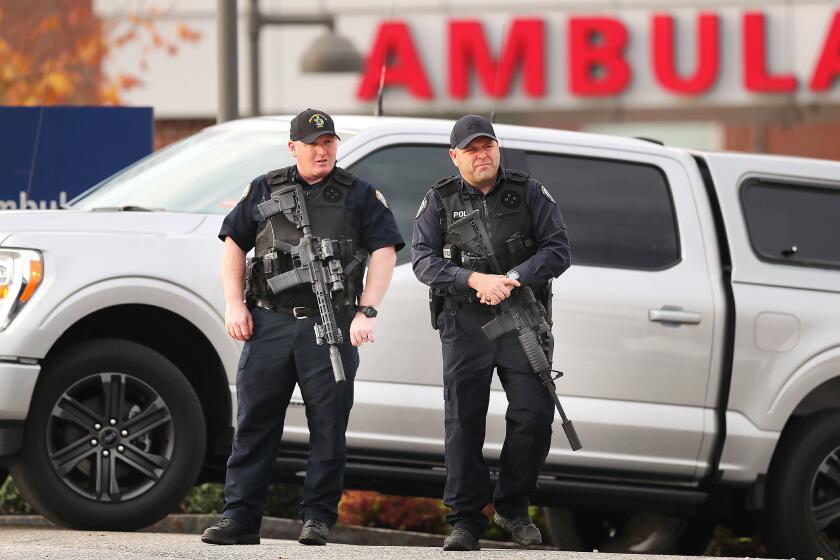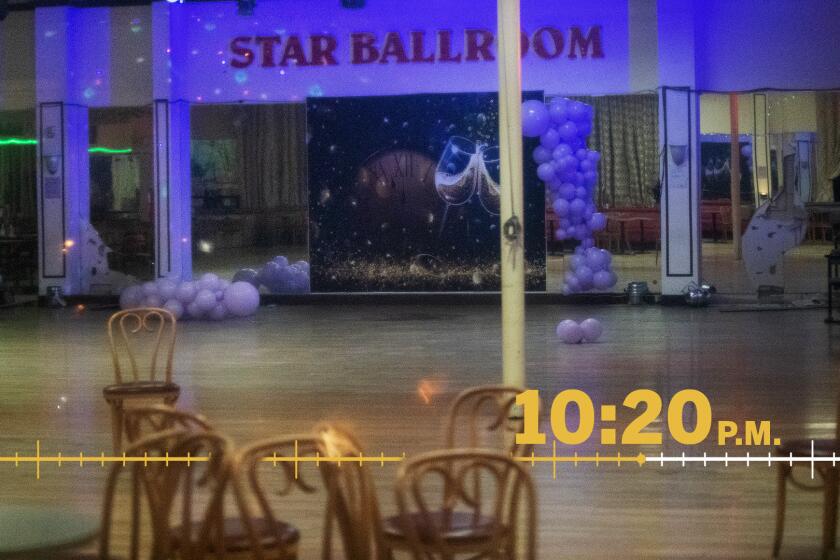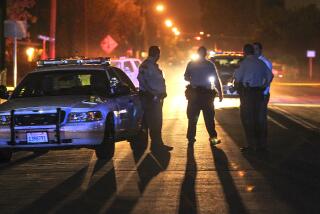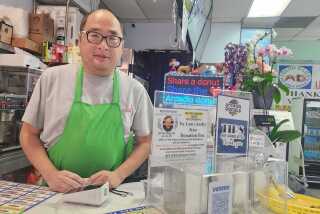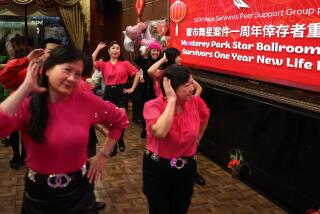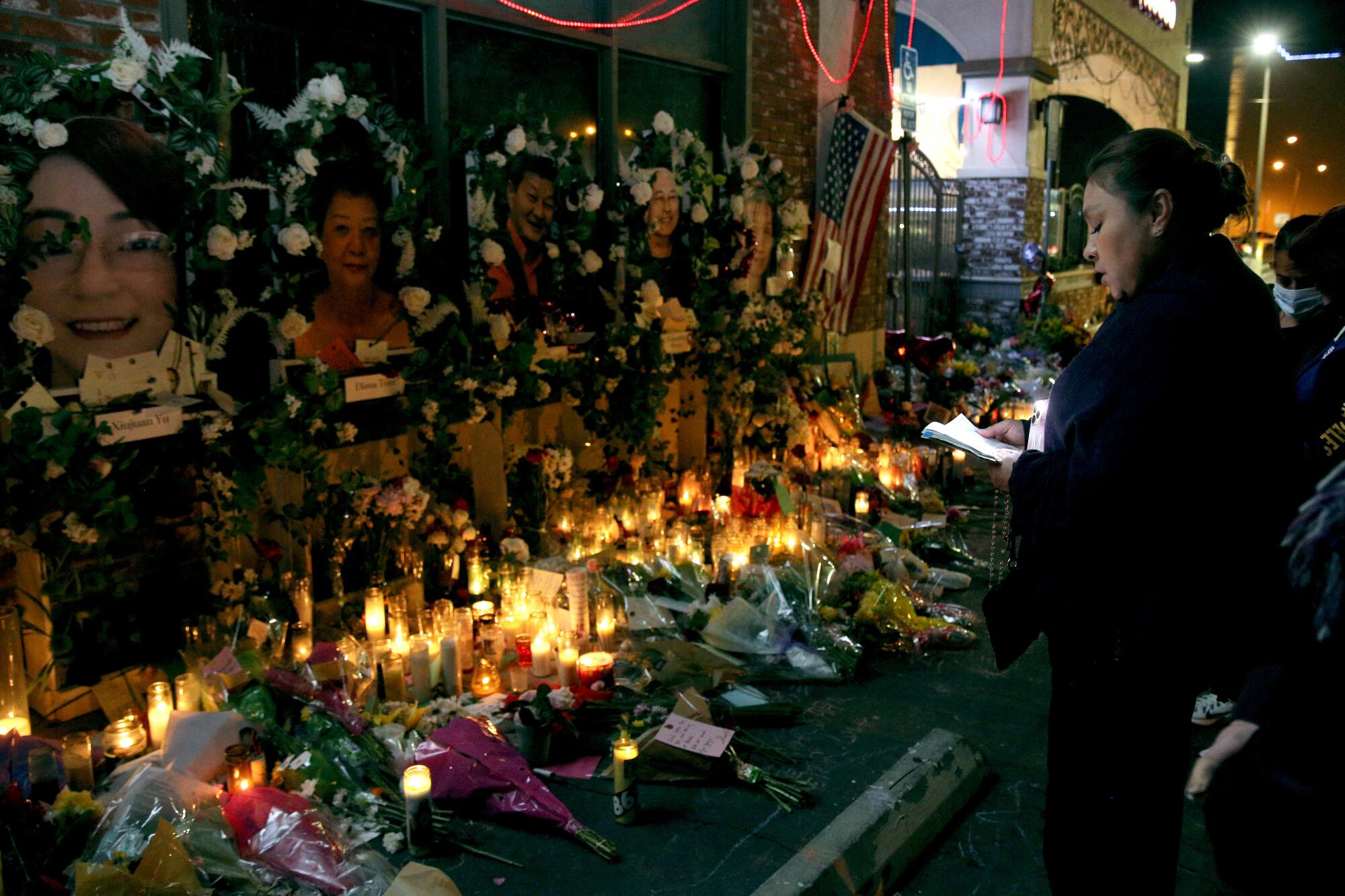
- Share via
Lloyd Gock was attending a Lunar New Year celebration at the Star Ballroom Dance Studio in Monterey Park in January when Huu Can Tran opened fire, killing 11 people and wounding nine others.
Gock survived by hiding under a table, but saw his friends shot and killed. When the gunfire stopped, blood and bodies littered the dance floor. Since the Jan. 21 massacre, the 67-year-old Alhambra resident has struggled with the psychological trauma, making it difficult for him to focus on work. After returning to his job, he said, his lack of focus made him lose out on “very big” sales contracts for his clothing company, Montana Jeans.
But when he found out about a GoFundMe campaign created to raise money for victims of the attack, he was surprised to learn he and other survivors didn’t qualify because they were not physically injured.
“We begged them so many times to include us,” he said. “You don’t have to give us a lot of money. Of course, a big chunk of that goes to the dead and the injured, but we deserve something too. The money comes from the public to us. That’s the biggest injustice that we feel.”
Within three weeks of the massacre, Asian Americans Advancing Justice Southern California — a legal aid and civil rights organization — raised more than $1 million for the Monterey Park Lunar New Year Victims Fund, greatly surpassing the group’s $200,000 goal. It was the largest fundraising effort created for the victims of the shooting.
Ultimately, the group and its partner organizations decided the money should go only to the families of the dead and injured because they — along with the nearly 11,000 donors — had already been informed that was the plan. The local organization had brought on the National Compassion Fund, a group created by victims of previous mass casualty crimes, to verify the identities of the victims and figure out how to distribute the funds.
“To go and change it and say, ‘Actually we’re going to expand the pool now and add eyewitness victims and we didn’t know how many there would be still,’ we felt that would be unfair to those we made commitments to,” said Connie Chung Joe, chief executive of AJSOCAL.
Families of the deceased received about $10,000 soon after the shooting to address any immediate financial concerns, Joe said.
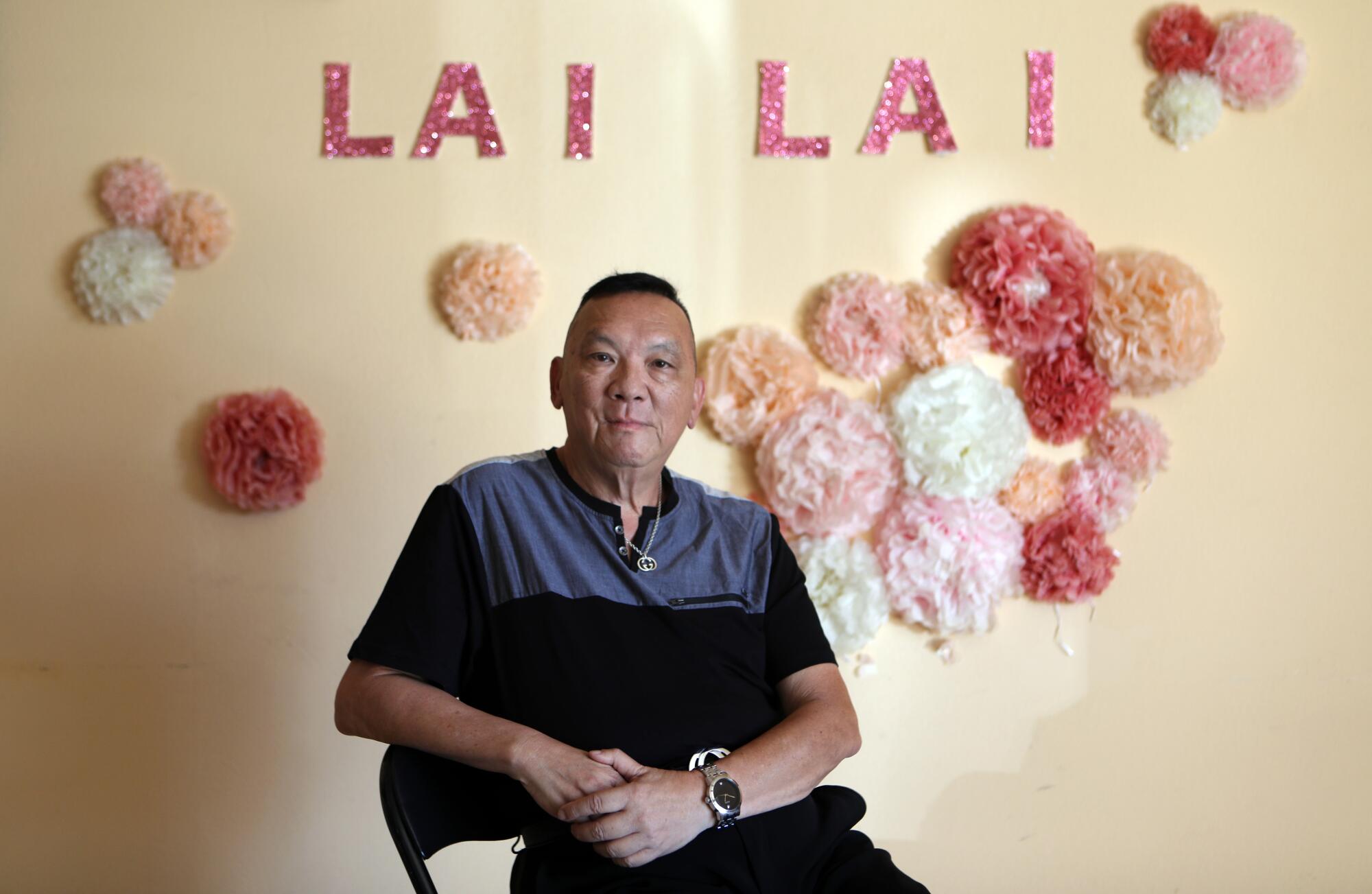
No amount of money can heal the wounds from a mass shooting, but some survivors of the Monterey Park tragedy who suffer lingering psychological trauma are upset that they have been left out of the distribution of funds.
Gock, who started a monthly support group with nearly two dozen other survivors, said he feels ignored.
After mass shootings, fundraisers often spring up online, amassing millions of dollars for the families of those killed and the survivors of the crimes. But what to do with the raised money, and how to distribute it, hasn’t always been straightforward. At times, it has been a point of contention between organizers and the victims they say they’re trying to help.
Such disputes also came up in the aftermath of the 1999 Columbine High School shooting, the 2012 movie theater attack in Aurora, Colo., the 2014 Isla Vista killings and the 2022 elementary school shooting in Uvalde, Texas.
Anita Busch, a co-founder of the National Compassion Fund and VictimsFirst, whose cousin was killed in Aurora, said she believes the best practice for fundraising is to consider everyone who survived a mass shooting.
“We feel like anybody who’s in a mass shooting, everybody in the Aurora theater, that was one family,” she said. “Everybody being shot at or running for their lives or having loved ones killed next to them. The people present were not included as victims, and it’s re-victimizing.”
The GoFundMe created after the Star Ballroom shooting raised about $1.4 million, according to Peter Ng, chief executive of Chinatown Service Center, one of the nonprofits involved in the fundraising.
“We begged them so many times to include us in,” he said. “You don’t have to give us a lot of money. Of course, a big chunk of that goes to the dead and the injured but we deserve something too. The money comes from the public to us. That’s the biggest injustice that we feel.”
— Lloyd Gock, a 67-year-old Alhambra resident who survived the Monterey Park shooting but got none of the GoFundMe money collected for victims.
Victims received different amounts depending on the severity of injury, if they were hospitalized and for how long, Joe said.
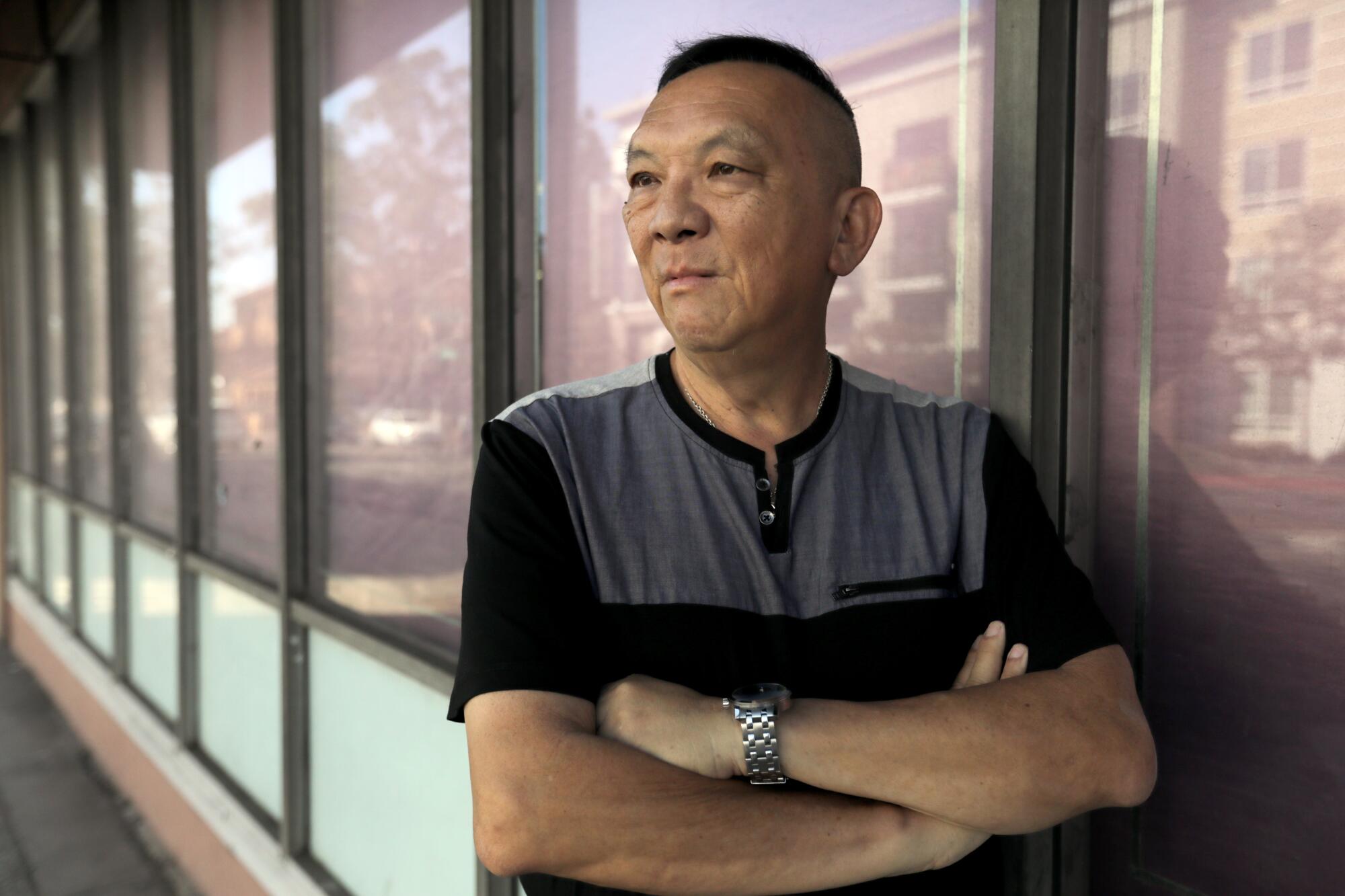
Gock ended up applying for and receiving a check from the Monterey Park Community Healing Fund, another victims fund created by the city.
City Treasurer Amy Lee, who oversees the fund, said that 37 victims who applied received about $3,000 each, with the checks going out in late October. The fund is still accepting donations and so far has raised about $193,000. Any money left over will go toward grants for nonprofits in Monterey Park that focus on community engagement, mental health services and violence education.
“We were just gonna do community healing, but there were so many people hurting from this incident so we felt we had to do something,” Lee said. “Even if it was small amount to acknowledge that they were there and they are suffering.”
After opening fire at the Monterey Park dance studio, the gunman went to a second dance facility, Lai Lai Ballroom & Studio in nearby Alhambra, which officials said appeared to be his next target. But he was disarmed by an employee before he could fire another shot. A fund was created in the name of the employee, Brandon Tsay, to help support mental health organizations.
Some organizations, such as the Colorado Healing Fund, have faced backlash for not distributing all of the money raised directly to the injured or to families who lost loved ones, but instead choosing to work with groups that address other victim needs.
Kevin McFatridge, executive director of the Colorado fund, said the group reserves about 10% of donations for long-term needs, such as hotel and airfare or if survivors need to attend a trial. The rest goes toward “acute” or “intermediate” needs, such as for funerals and memorials. McFatridge’s organization also tends to include survivors who weren’t physically injured in the victim pool.
Six months after a mass shooting in Monterey Park that left 11 dead, survivors and fellow dancers have come together, forging new relationships.
“When we cut a check, we cut a disbursement to victim organizations and they cut the checks directly to the victims and survivors,” he said.
After the 2012 movie theater shooting, attorney Kenneth Feinberg — who served as special master for the Aurora Victim Relief Fund — announced that the more than $5 million raised would go only to the families of the dead and to those who were physically injured.
Feinberg, along with his colleague Camille Biros, has handled compensation funds for victims of the Sept. 11 terrorist attacks, the BP Deepwater Horizon oil spill, the Boston Marathon bombing and the Virginia Tech, Sandy Hook and Orlando Pulse nightclub shootings.
To avoid confusion and hard feelings among victims, Feinberg said, he and Biros have hosted community meetings where they share plans for fund distribution and take feedback. He said that although some people have expressed discontent with the proposals, there has not been a serious outcry.
“The reason we promote transparency is so nobody can later claim that they didn’t know about the details of the program and how it would work,” he said. “We want buy-in from the victims in the community.”
Authorities say 18 people were killed and 13 injured at two locations Wednesday night in Lewiston, the second-largest city in Maine.
With the Monterey Park shooting donations, Busch said, campaign organizers had already made it clear to whom the money would go — the families of the deceased and the physically injured — and so they “have to follow donor intent.”
“They can’t go back on that,” she said.
Joe, of Asian Americans Advancing Justice Southern California, said the group also felt “burdened” by how long the process would take if it expanded the pool of victims.
She said she understood — and regretted —that it can be difficult for survivors in communities that aren’t English-proficient to apply for help from the California Victim Compensation Board. That agency provides up to $70,000 to qualifying victims of violence, who must fill out forms that include proof for crime-related expenses such as mental health treatment, income loss or job training.
“I definitely feel for them,” Joe said. “They are victims. Just because you weren’t physically injured doesn’t mean you don’t have trauma and emotional and mental scars.”
Gock said that he didn’t feel he would qualify for funding from the California Victim Compensation Board and doesn’t know of any uninjured survivors who have gotten money from it.
“Most of us had to go back to work the next day [after the shooting],” he said. “The only way you can get any money from them is if you were hurt and not able to work because of what happened.”
As a native Californian, I’m used to thinking earthquakes are just a fact of life. But we shouldn’t approach mass shootings that way.
Eric Chen, a San Gabriel pastor and educator who has been helping the survivors get access to resources, said it’s difficult for them to apply for compensation on top of grappling with lasting trauma.
“When you’re a victim, you want to get the help but it’s very difficult because imagine going through all the trauma and then trying to prove your income, trying to do your taxes,” he said.
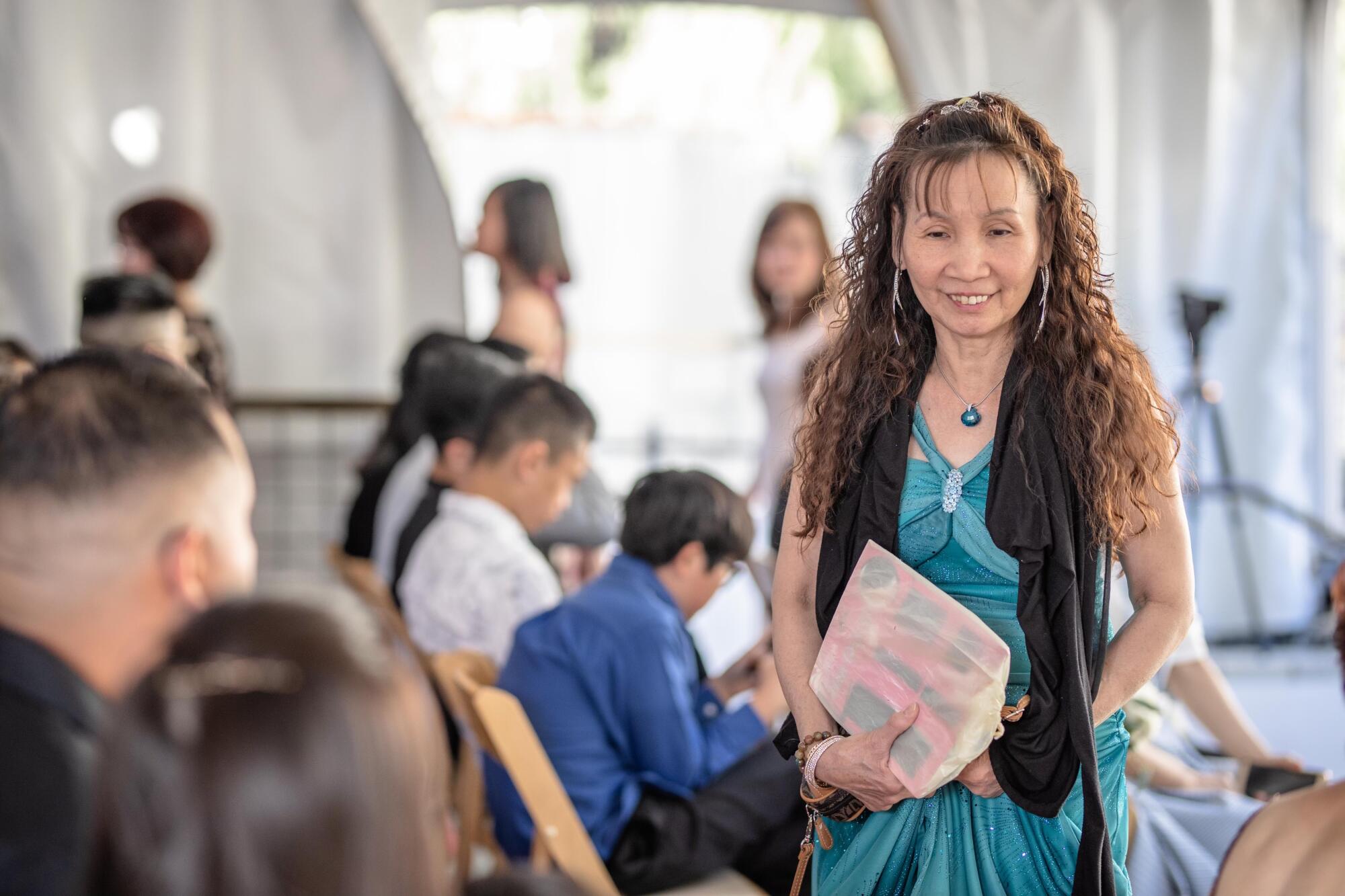
The family of Mymy Nhan, 65, who was the first person killed outside the Star Ballroom studio, plans to use some of the money from the GoFundMe donations to create the Mymy Nhan Legacy Fund. The family plans to donate to Seniors Fight Back, which empowers AAPI seniors to defend themselves against violence.
Fonda Quan, Nhan’s niece, declined to specify how much money the family received.
Quan said she empathized with the survivors who weren’t physically injured but were psychologically scarred by the shooting. She encouraged them to go to the Monterey Park Hope Resiliency Center for support groups, counseling and other assistance.
“Aside from physical injury, I can totally see the emotional trauma being a witness of such a tragedy,” she said. “I can’t imagine being there physically and seeing all of that unfold. That’s definitely something that people could possibly live with for a very long time.”
“I definitely feel for them,” Joe said. “They are victims. Just because you weren’t physically injured doesn’t mean you don’t have trauma and emotional and mental scars.”
— Connie Chung Joe, chief executive of the Asian Americans Advancing Justice Southern California, which launched a GoFundMe account for people who were shot or injured in the shooting but not for witnesses of the mass killing.
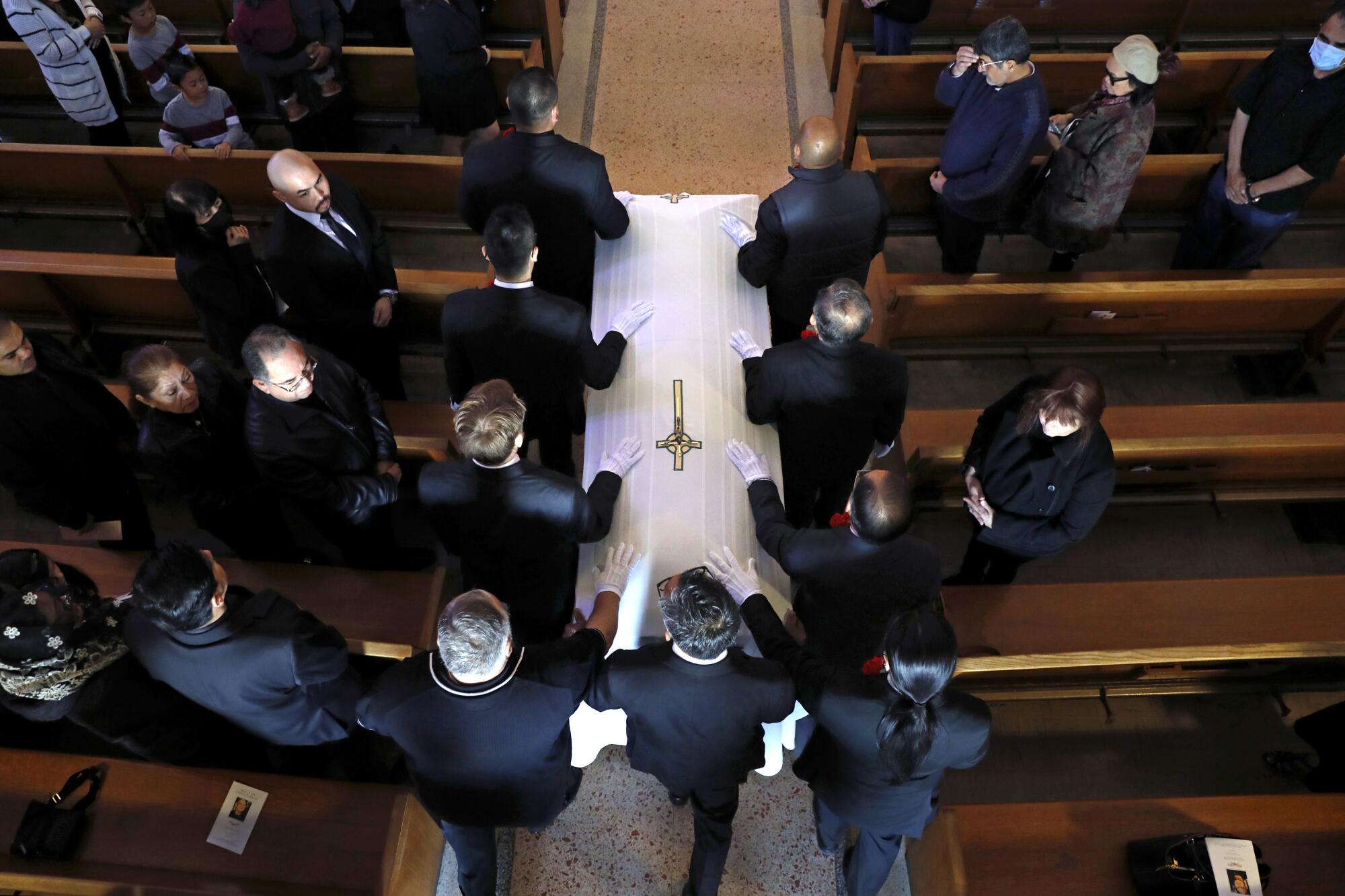
Kristenne Reidy, the daughter of Monterey Park shooting victim Valentino Alvero, 68, also declined to divulge the total amount her family received, but said they used it for burial and other expenses.
“When this happened, we didn’t expect to receive any help,” she said. “The fact that we did, not only helped us out financially, but to know that we had so much support from strangers and community members.”
Sam, 78, an Arcadia resident, was sitting on the left side of the ballroom, about five tables from the doorway, when he heard the gunshots. He dropped to the ground and hid under a table. The person in front of him was bleeding.
Using witness accounts, original video, photographs, emergency dispatch recordings and user-generated content, this video recounts the details of what happened on Saturday, Jan. 21, when a gunman opened fire at a ballroom dance studio in Monterey Park, killing 11 people and injuring nine.
After the noises stopped, Sam, who asked that his last name not be published, hurried outside and drove home, leaving his phone behind. As he was driving off, he saw police arrive at the scene.
“I was so scared,” he said. “I didn’t tell my wife what was taking place in the Star Ballroom as I didn’t want her to worry. I thought I was lucky, even though I was scared to death.”
Sam went back to dancing at another studio two weeks after the shooting, but is often worried when he’s in a large gathering or crowd. He wonders whether he’s putting his life in danger.
Sam said he believes he and the other physically uninjured survivors should have received some of the donations for the psychological damage they still endure.
“Just as a ship or aircraft, if there is an accident, the survivors would also be affected by it,” he said. “The survivors were scared and mentally hurt. They found it hard to believe in other people, and some of them gave up any effort in life and work.”
More to Read
Sign up for Essential California
The most important California stories and recommendations in your inbox every morning.
You may occasionally receive promotional content from the Los Angeles Times.


